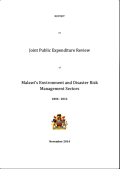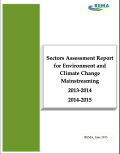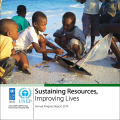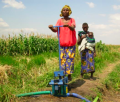
This report is a documentation of the joint public expenditure review of Environment and Disaster Risk Management for the 2006 to 2012 period. Public Expenditure Reviews (PERs) involve the analysis of allocation and management of public expenditures and may cover all government expenditure or focus on a few priority sectors such as agriculture, water, land, infrastructure and others.

An assessment of Integration and Implementation of Environment and Climate Change Activities into Development Sectors Plans and Programmes in Rwanda conducted by the Rwanda Environment Management Authority (REMA) through the Department of Environmental Education and Mainstreaming (DEEM) with the support of the Poverty-Environment Initiative (PEI).

The report features the achievements of the Initiative in each of the major areas of work: coordination across government institutions; cross-sector economic, social, and environmental assessments to inform national, local, and sectoral policy and planning; supporting fiscal reform; promoting gender equality and social inclusion; South-South cooperation and partnerships; and support to put in place building blocks for the implementation of the 2030 Agenda for Sustainable Development.

This policy brief draws on the findings from the report and makes an economic case for investing in ENRs to reduce poverty within the context of what is generally known as the ‘poverty-environment nexus.’

This economic analysis report is structured around two arguments. Firstly, natural resources and ecosystem services in particular have significant contribution to economic growth and poverty reduction. Secondly, failure to manage natural resources, conserve and protect the ecosystem will result in costs of degradation that will compromise medium and long term sustainable development. An ecosystem services approach has been used which is capable of capturing aspects of the environment and natural resources that are usually neglected either because they do not have market values or they cannot readily be quantified. The approach is supported by Case Studies of Rugezi Wetlands and Gishwati Forest.
